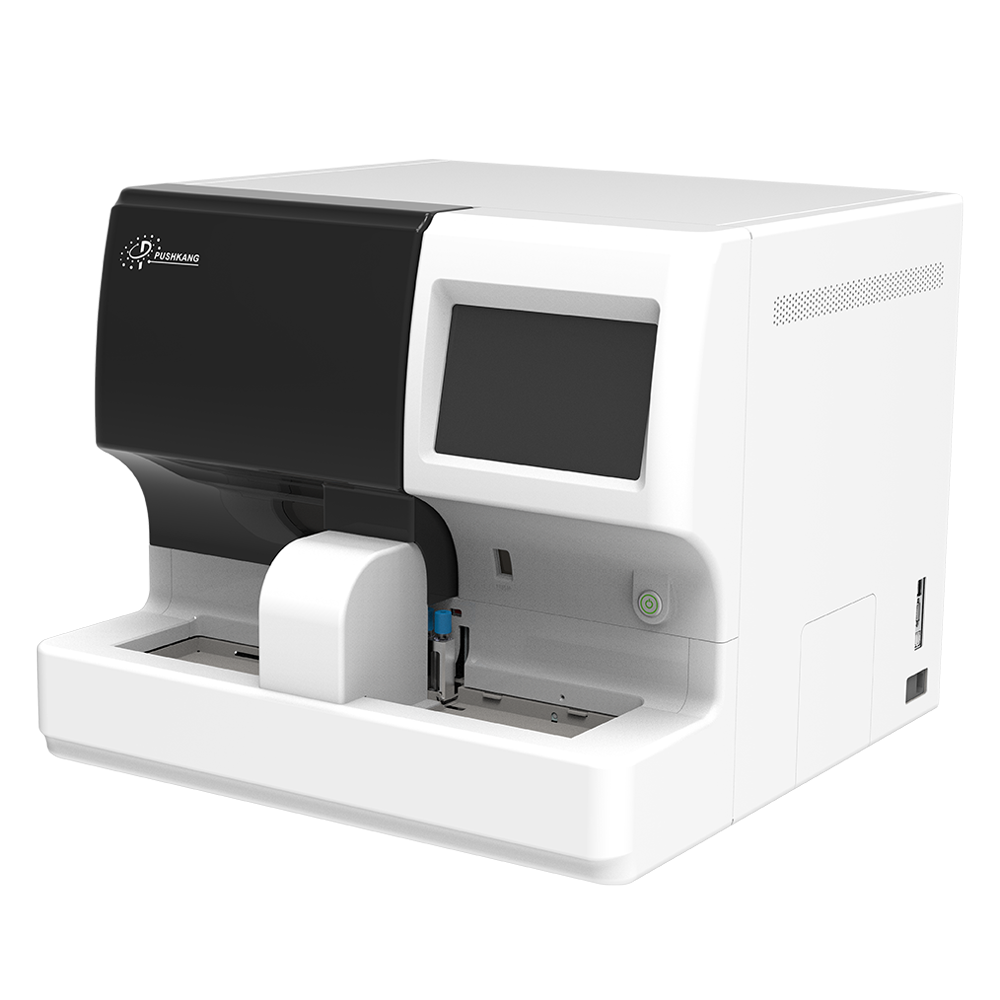Coagulation analyzer

Here is an introduction to the coagulation analyzer:
Overview
A coagulation analyzer is a vital medical device used in clinical laboratories to measure and evaluate the coagulation function of blood. It plays a crucial role in diagnosing bleeding and thrombotic disorders, monitoring anticoagulant therapy, and assessing the overall hemostatic status of patients.
Working Principles
- Clot – based methods: The most common principle is based on the detection of clot formation. For example, in the prothrombin time (PT) and activated partial thromboplastin time (APTT) tests, specific reagents are added to the blood sample to initiate the coagulation cascade. The analyzer measures the time it takes for a fibrin clot to form, which reflects the activity of various clotting factors in the blood.
- Chromogenic assays: These methods rely on the cleavage of specific chromogenic substrates by activated clotting factors. The degree of substrate cleavage is proportional to the activity of the corresponding clotting factor, and the analyzer measures the absorbance of the chromophore released, thus quantifying the factor activity.
- Immunological methods: Some coagulation analyzers use immunological techniques to measure the antigenic levels of clotting factors or related proteins. For example, enzyme – linked immunosorbent assays (ELISA) can be used to determine the concentration of specific clotting factors in the blood.
Features and Advantages
- Accurate and reliable results: Coagulation analyzers are designed to provide highly accurate and reproducible results, which is essential for making correct clinical judgments. They can precisely measure the time – dependent changes in clot formation or the activity/quantity of clotting factors, helping doctors accurately assess the patient’s coagulation status.
- Automation and high efficiency: Modern coagulation analyzers are highly automated, capable of performing multiple tests simultaneously and processing a large number of samples in a short time. This significantly improves the work efficiency of the laboratory and reduces the labor – intensity of technicians.
- Wide range of test items: These analyzers can perform a variety of coagulation – related tests, including PT, APTT, fibrinogen assays, thrombin time, and tests for specific clotting factor deficiencies or inhibitors. This comprehensive testing capability enables a more detailed evaluation of the patient’s coagulation function.
Clinical Applications
- Diagnosis of bleeding disorders: Coagulation analyzers are used to diagnose various bleeding disorders, such as hemophilia (caused by deficiencies in specific clotting factors), von Willebrand disease (a disorder of platelet adhesion), and vitamin K deficiency (which affects the synthesis of several clotting factors). By measuring the activity of clotting factors and other coagulation parameters, doctors can identify the cause of bleeding and formulate appropriate treatment plans.
- Monitoring of anticoagulant therapy: Patients receiving anticoagulant drugs, such as warfarin or heparin, require regular monitoring of their coagulation status to ensure the effectiveness and safety of the treatment. Coagulation analyzers are used to measure PT – international normalized ratio (INR) for warfarin – treated patients and APTT for those on heparin therapy. This allows doctors to adjust the drug dosage according to the patient’s individual coagulation response.
- Assessment of thrombotic risk: In patients with a high risk of thrombosis, such as those with cardiovascular diseases, diabetes, or cancer, coagulation analyzers can be used to evaluate the coagulation function and predict the risk of thrombus formation. Abnormalities in certain coagulation parameters may indicate an increased thrombotic risk, prompting doctors to take preventive measures, such as prescribing anticoagulant or anti – platelet drugs.
凝血分析仪是临床检验中用于评估血液凝固功能的重要设备,以下是其详细介绍:
概述
凝血分析仪主要用于对血液的凝血功能进行检测和分析,在出血性疾病、血栓性疾病的诊断,以及抗凝治疗监测等方面有着关键作用,能够帮助医生全面了解患者的止血状态。
工作原理
- 凝固法:这是最常用的原理之一。通过向血液样本中加入特定的试剂,启动凝血级联反应,然后检测纤维蛋白凝块形成的时间。例如,在凝血酶原时间(PT)和活化部分凝血活酶时间(APTT)的检测中,试剂会激活相应的凝血途径,分析仪记录从加入试剂到形成凝块的时间,以此反映血液中各种凝血因子的活性。
- 发色底物法:该方法利用活化的凝血因子对特定发色底物的裂解作用。底物被裂解的程度与相应凝血因子的活性成正比,分析仪通过测量裂解后释放的发色团的吸光度,来定量分析凝血因子的活性。
- 免疫法:部分凝血分析仪采用免疫技术来测量凝血因子或相关蛋白质的抗原水平。比如,酶联免疫吸附试验(ELISA)可用于测定血液中特定凝血因子的浓度。
功能特点
- 结果准确可靠:凝血分析仪能够提供高精度和可重复性的检测结果。它可以精确测量凝块形成的时间变化以及凝血因子的活性或含量,为临床诊断提供准确依据,有助于医生准确判断患者的凝血状况。
- 自动化程度高:现代凝血分析仪具备高度自动化功能,可同时进行多项检测,能在短时间内处理大量样本。这不仅提高了实验室的工作效率,还降低了技术人员的劳动强度。
- 检测项目丰富:这类分析仪可开展多种与凝血相关的检测项目,包括 PT、APTT、纤维蛋白原测定、凝血酶时间,以及针对特定凝血因子缺乏或抑制剂的检测等。丰富的检测项目能够更全面地评估患者的凝血功能。
临床应用
- 出血性疾病诊断:用于诊断多种出血性疾病,如血友病(由特定凝血因子缺乏引起)、血管性血友病(血小板黏附功能障碍)和维生素 K 缺乏症(影响多种凝血因子的合成)等。通过检测凝血因子活性和其他凝血参数,医生可以明确出血原因,制定相应的治疗方案。
- 抗凝治疗监测:接受抗凝药物治疗(如华法林或肝素)的患者需要定期监测凝血状态,以确保治疗的有效性和安全性。凝血分析仪用于测量华法林治疗患者的 PT – 国际标准化比值(INR)以及肝素治疗患者的 APTT,帮助医生根据患者的个体凝血反应调整药物剂量。
- 血栓风险评估:对于心血管疾病、糖尿病或癌症等高血栓风险患者,凝血分析仪可用于评估凝血功能,预测血栓形成的风险。某些凝血参数的异常可能提示血栓风险增加,促使医生采取预防措施,如开具抗凝或抗血小板药物。
